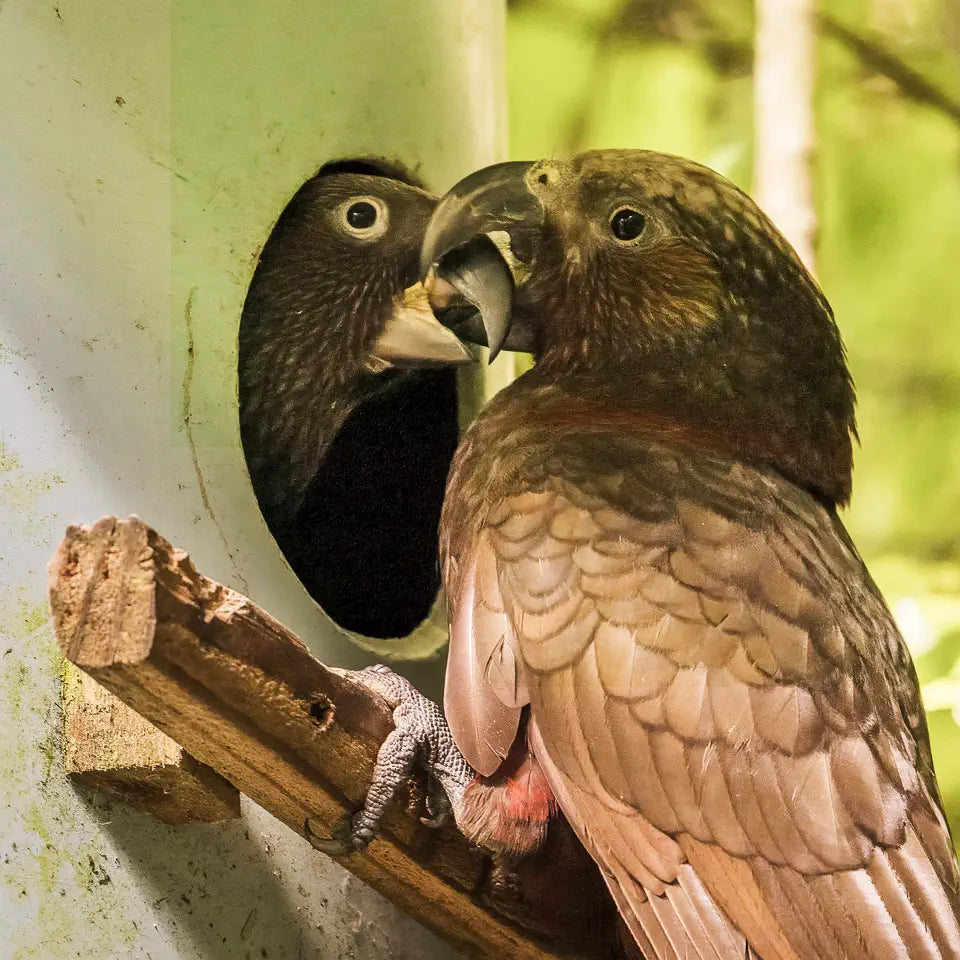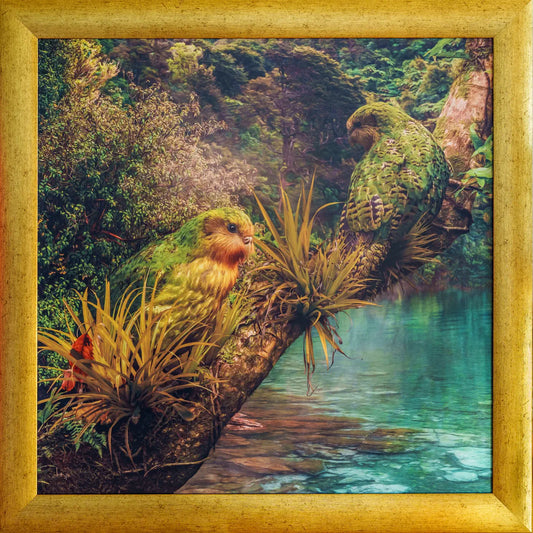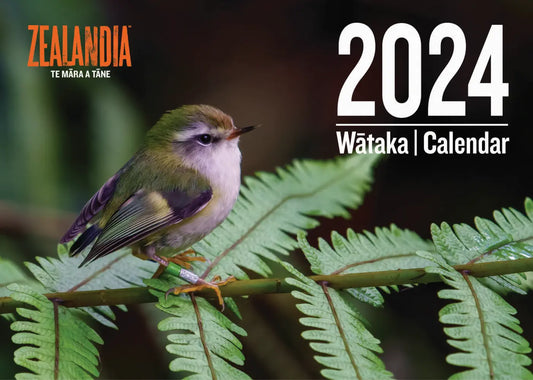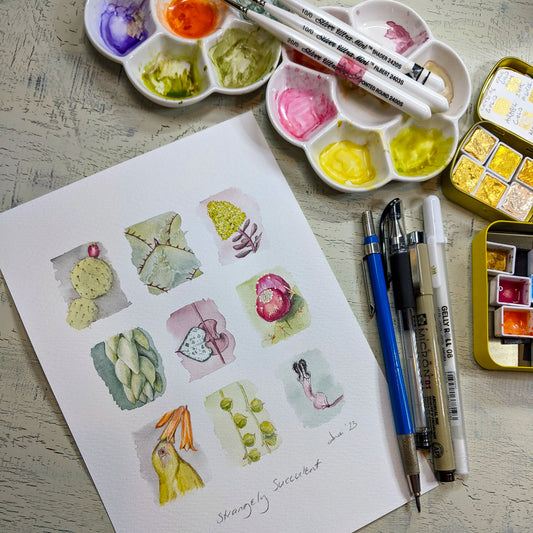
A sweet moment captured while kākā nestbox monitoring
Share
Earlier this week, I was checking on some kākā nestboxes at Zealandia EcoSanctuary. We do this to get an estimate of the chicks ages so we know when to band them (see this previous blog on banding baby kākā). There are special protocols we follow when checking boxes to minimize disturbance, so there can be a lot of waiting around.

We stay at a respectful distance when monitoring, but kākā like to know what's going on so we don't hide ourselves. Kākā observe their observers as much as we observe them. Mama is fluffing up because she's also begging to Papa for food for the bubs. Papa feeds her and she then feeds the chicks. It's a lot of regurgitation, but it does the trick. They did this right above my head so I was lying on my back trying to photograph directly up - it's not easy with a zoom lens so I only got this photo!
After many years of experimentation, Zealandia settled on using PVC conduit for the artifical nestboxes. They tend to result in healthier, cleaner, drier nests with less fly strike than a traditional wooden box. They also can be reused each year. Wooden panels are screwed inside for kākā to chew and climb on, and are replaced each season. I describe the design as inspired by NZ architect Ian Atfield (who loved organic round shapes and round portals), compared to the original wooden bungalow that dot the hills of Wellington.
Through incubation, and when the chicks are very young, Mama spends most of her time in the box, coming out every hour for a break and a feed from Papa. Once the chicks are bigger and older, she'll spend more time out of the box, entering to feed and preen the chicks, and to make more nesting material by peeling the wooden panels inside into shavings.
Through incubation, and when the chicks are very young, Mama spends most of her time in the box, coming out every hour for a break and a feed from Papa. Once the chicks are bigger and older, she'll spend more time out of the box, entering to feed and preen the chicks, and to make more nesting material by peeling the wooden panels inside into shavings.
The nestbox porthole is the way kākā get in and out of the nest. For us humans, we have a hinged door on the side that we can open to get full access. It's totally up to these wild kākā to use these boxes if they wish to. Plenty choose not to and instead find natural nests in tree cavities. There are about 35 nestboxes throughout the Zealandia valley.
It's not until the chicks are about 7 weeks old that they start climbing the inside of the nestbox and testing their wings. Nestbox monitors will report hearing the scratching as they climb up and then the flapping of wings before the inevitable thud as they fall back into the nest, often to complaints from their nestmates. By about 8 weeks they're ready to fledge and will spend a lot of time climbing up and looking out, until one day, with some coaxing from Mama and Papa, they'll take a leap of faith and flutter-fall down to the ground ready to take on the world. Fortunately the nestboxes are all low to the ground but natural nests can be many metres up a tree.
It takes at least a couple of weeks to learn to fly with confidence, so initially the chicks climb everywhere. They're incredibly vulnerable to predation at this stage, which is why it's so important to attract our wild kākā to nest in the fenced Zealandia valley where they are safe from predators. The Zealandia fence is not just any old fence - it's scientifically designed to keep out predators. Kākā who breed outside the valley in suburban Wellington reserves suffer a much higher attrition rate due to predation from cats, dogs, stoats, weasels and other mammalian predators.
We are so fortunate to have this amazing rare manu in our city and it's been a privilege to be involved in their breeding success. This season's cohort are getting gorgeous purple bands - be on the look-out for them as they've started fledging and will soon be showing up at the kākā feeding stations at Zealandia.
It takes at least a couple of weeks to learn to fly with confidence, so initially the chicks climb everywhere. They're incredibly vulnerable to predation at this stage, which is why it's so important to attract our wild kākā to nest in the fenced Zealandia valley where they are safe from predators. The Zealandia fence is not just any old fence - it's scientifically designed to keep out predators. Kākā who breed outside the valley in suburban Wellington reserves suffer a much higher attrition rate due to predation from cats, dogs, stoats, weasels and other mammalian predators.
We are so fortunate to have this amazing rare manu in our city and it's been a privilege to be involved in their breeding success. This season's cohort are getting gorgeous purple bands - be on the look-out for them as they've started fledging and will soon be showing up at the kākā feeding stations at Zealandia.








2 comments